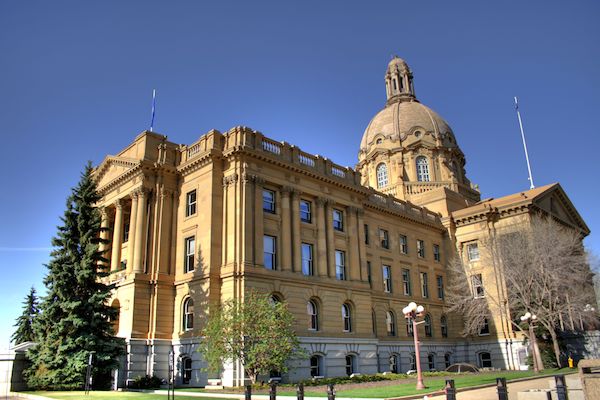Alberta
Province of Alberta offering third dose of Covid-19 vaccine to seniors living in care facilities

Third vaccine doses available Sept. 1
Starting Sept. 1, third doses of COVID-19 vaccine will be available for all seniors living in congregate care facilities and for immunocompromised Albertans.
Alberta’s government has always prioritized the care of our most vulnerable. Alberta was one of the first provinces to offer vaccines to seniors in congregate care facilities and to immunocompromised Albertans.
Receiving a third dose will boost immunity levels and improve protection for all seniors living in congregate care facilities and individuals with compromised immune systems.
In addition, mRNA doses will be made available to Albertans who are travelling to a jurisdiction that does not accept visitors who have been vaccinated with Covishield/AstraZeneca or mixed doses.
“We remain committed to protecting Albertans from COVID-19, and vaccinations are the safest and most effective way to offer this protection. We have always relied on the latest research to guide our decision-making, and now that evidence shows immunocompromised individuals and seniors in congregate care will benefit from getting a third dose, we are pleased to provide them.”
“The data shows that additional doses will offer stronger protection for immunocompromised individuals and older Albertans living in supportive living facilities. Just as we offered these individuals earlier access to COVID-19 vaccines and a shorter four-week interval between doses, we will continue to work to protect all Albertans as new data emerges. However, the best way for us to protect each other is still for as many people as possible to be fully immunized.”
Seniors living in congregate care
Seniors living in congregate care facilities will be eligible to receive their third dose approximately five months after their second dose. Eligible residents will receive their third doses at their facilities.
Immunocompromising conditions
Immunocompromising conditions that qualify for an additional dose at least eight weeks after their second dose include:
- Transplant recipients, including solid organ transplants and hematopoietic stem cell transplants.
- Individuals with chronic kidney disease who are receiving regular dialysis.
- Individuals in active cancer treatment (chemotherapy, immunotherapy or targeted therapies) excluding those receiving only hormonal therapy, radiation therapy or surgery.
- Individuals on certain medications for autoimmune diseases, including rituximab, ocrelizumab and ofatumumab.
Travel vaccinations
Albertans with two valid doses of any vaccine used in Alberta are considered to have received a complete series.
However, some jurisdictions outside of Canada have indicated that they will not accept visitors who have been vaccinated with Covishield/AstraZeneca or mixed doses.
Additional mRNA doses will be made available at least 28 days after a second dose to Albertans who are travelling to a jurisdiction that does not accept visitors who have been vaccinated with Covishield/AstraZeneca or mixed doses.
Quick facts
- There are 118,000 individuals who would be eligible for an additional COVID-19 vaccine dose based on being immunocompromised (approximately 60,000 Albertans) and those living in seniors supportive living (approximately 58,000 Albertans).
- To date, 77.9 per cent of Albertans aged 12-plus have received at least one dose of COVID-19 vaccine and 69.7 per cent have received two doses.
- Immunizations records are available through MyHealth Records. Albertans who are travelling can also use their hard copy record that was provided at the time of vaccination.
Alberta
CPP another example of Albertans’ outsized contribution to Canada

From the Fraser Institute
By Tegan Hill
Amid the economic uncertainty fuelled by Trump’s trade war, its perhaps more important than ever to understand Alberta’s crucial role in the federation and its outsized contribution to programs such as the Canada Pension Plan (CPP).
From 1981 to 2022, Albertan’s net contribution to the CPP—meaning the amount Albertans paid into the program over and above what retirees in Alberta received in CPP payments—was $53.6 billion. In 2022 (the latest year of available data), Albertans’ net contribution to the CPP was $3.0 billion.
During that same period (1981 to 2022), British Columbia was the only other province where residents paid more into the CPP than retirees received in benefits—and Alberta’s contribution was six times greater than B.C.’s contribution. Put differently, residents in seven out of the nine provinces that participate in the CPP (Quebec has its own plan) receive more back in benefits than they contribute to the program.
Albertans pay an outsized contribution to federal and national programs, including the CPP because of the province’s relatively high rates of employment, higher average incomes and younger population (i.e. more workers pay into the CPP and less retirees take from it).
Put simply, Albertan workers have been helping fund the retirement of Canadians from coast to coast for decades, and without Alberta, the CPP would look much different.
How different?
If Alberta withdrew from the CPP and established its own standalone provincial pension plan, Alberta workers would receive the same retirement benefits but at a lower cost (i.e. lower CPP contribution rate deducted from our paycheques) than other Canadians, while the contribution rate—essentially the CPP tax rate—to fund the program would likely need to increase for the rest of the country to maintain the same benefits.
And given current demographic projections, immigration patterns and Alberta’s long history of leading the provinces in economic growth, Albertan workers will likely continue to pay more into the CPP than Albertan retirees get back from it.
Therefore, considering Alberta’s crucial role in national programs, the next federal government—whoever that may be—should undo and prevent policies that negatively impact the province and Albertans ability to contribute to Canada. Think of Bill C-69 (which imposes complex, uncertain and onerous review requirements on major energy projects), Bill C-48 (which bans large oil tankers off B.C.’s northern coast and limits access to Asian markets), an arbitrary cap on oil and gas emissions, numerous other “net-zero” targets, and so on.
Canada faces serious economic challenges, including a trade war with the United States. In times like this, it’s important to remember Alberta’s crucial role in the federation and the outsized contributions of Alberta workers to the wellbeing of Canadians across the country.
Alberta
Made in Alberta! Province makes it easier to support local products with Buy Local program

Show your Alberta side. Buy Local. |
When the going gets tough, Albertans stick together. That’s why Alberta’s government is launching a new campaign to benefit hard-working Albertans.
Global uncertainty is threatening the livelihoods of hard-working Alberta farmers, ranchers, processors and their families. The ‘Buy Local’ campaign, recently launched by Alberta’s government, encourages consumers to eat, drink and buy local to show our unified support for the province’s agriculture and food industry.
The government’s ‘Buy Local’ campaign encourages consumers to buy products from Alberta’s hard-working farmers, ranchers and food processors that produce safe, nutritious food for Albertans, Canadians and the world.
“It’s time to let these hard-working Albertans know we have their back. Now, more than ever, we need to shop local and buy made-in-Alberta products. The next time you are grocery shopping or go out for dinner or a drink with your friends or family, support local to demonstrate your Alberta pride. We are pleased tariffs don’t impact the ag industry right now and will keep advocating for our ag industry.”
Alberta’s government supports consumer choice. We are providing tools to help folks easily identify Alberta- and Canadian-made foods and products. Choosing local products keeps Albertans’ hard-earned dollars in our province. Whether it is farm-fresh vegetables, potatoes, honey, craft beer, frozen food or our world-renowned beef, Alberta has an abundance of fresh foods produced right on our doorstep.
Quick facts
- This summer, Albertans can support local at more than 150 farmers’ markets across the province and meet the folks who make, bake and grow our food.
- In March 2023, the Alberta government launched the ‘Made in Alberta’ voluntary food and beverage labelling program to support local agriculture and food sectors.
- Through direct connections with processors, the program has created the momentum to continue expanding consumer awareness about the ‘Made in Alberta’ label to help shoppers quickly identify foods and beverages produced in our province.
- Made in Alberta product catalogue website
Related information
-

 International2 days ago
International2 days agoJD Vance was one of the last people to meet Pope Francis
-

 2025 Federal Election2 days ago
2025 Federal Election2 days agoOttawa Confirms China interfering with 2025 federal election: Beijing Seeks to Block Joe Tay’s Election
-

 2025 Federal Election1 day ago
2025 Federal Election1 day agoBREAKING: THE FEDERAL BRIEF THAT SHOULD SINK CARNEY
-

 COVID-191 day ago
COVID-191 day agoNearly Half of “COVID-19 Deaths” Were Not Due to COVID-19 – Scientific Reports Journal
-

 2025 Federal Election1 day ago
2025 Federal Election1 day agoHow Canada’s Mainstream Media Lost the Public Trust
-

 2025 Federal Election1 day ago
2025 Federal Election1 day agoCHINESE ELECTION THREAT WARNING: Conservative Candidate Joe Tay Paused Public Campaign
-

 Media23 hours ago
Media23 hours agoCBC retracts false claims about residential schools after accusing Rebel News of ‘misinformation’
-

 2025 Federal Election2 days ago
2025 Federal Election2 days agoReal Homes vs. Modular Shoeboxes: The Housing Battle Between Poilievre and Carney






